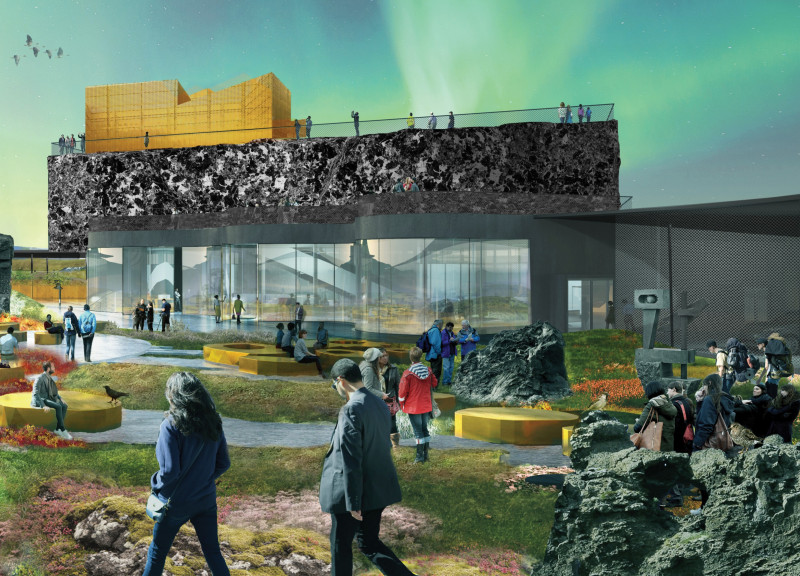5 key facts about this project
The Mývatn Volcano Museum is a dedicated facility situated in Iceland’s Mývatn region, designed to educate visitors about the unique geological history and volcanic activity of the area. This architectural project serves not only as an exhibition space but also as a community center, providing resources related to environmental conservation and local culture. The design integrates seamlessly with the landscape, ensuring minimal disruption to the natural surroundings while enhancing the visitor experience.
The museum’s structure is characterized by materials that reflect the local environment. It employs local stone, glass, steel, and wood, thereby promoting sustainability and ensuring the building resonates with its geological context. The expansive use of glass facilitates natural light, connecting interior spaces with outside views, further establishing a sense of unity between nature and architecture.
Integration with Landscape
A key feature of the Mývatn Volcano Museum is its integration into the site’s landscape. The design takes cues from the surrounding volcanic formations, with contours that echo natural geological shapes. This approach not only helps the building blend into its environment but also creates outdoor terraces that provide vantage points for observing the region’s natural beauty. The relationship between the museum and its landscape fosters a dialogue about geological processes and the ecosystems that thrive in such settings.
The path layouts within the museum mimic the flow of natural terrain, encouraging visitors to explore various sections, such as exhibition halls and public gathering spaces. This thoughtful design approach prioritizes a visitor-focused experience, allowing for easy navigation while promoting interaction with exhibits that present the region’s ecological and geological narratives.
Sustainability Initiatives
Sustainability is a core element of the Mývatn Volcano Museum’s design strategy. The use of green roof technology not only enhances the building's insulation but also integrates it into the surrounding vegetation. This choice contributes to the ecological footprint of the project, mindful of the delicate environment of Iceland. Additionally, the employment of locally sourced materials reduces transportation emissions and supports regional craftsmanship. The design encourages conservation awareness through its educational programming, reinforcing the museum’s role as both an informative and environmentally conscious institution.
The architectural plans and sections illustrate the project’s commitment to merging functionality with ecological responsibility. Detailed designs and layouts optimize the visitor experience while maintaining a converse relationship with the natural terrain. The Mývatn Volcano Museum is an exemplar of how architecture can serve educational purposes while celebrating and preserving its natural context.
For a thorough understanding of the Mývatn Volcano Museum's design and its unique approaches, readers are encouraged to explore the detailed architectural plans, sections, and design ideas that outline the thought process behind this significant project.






















































